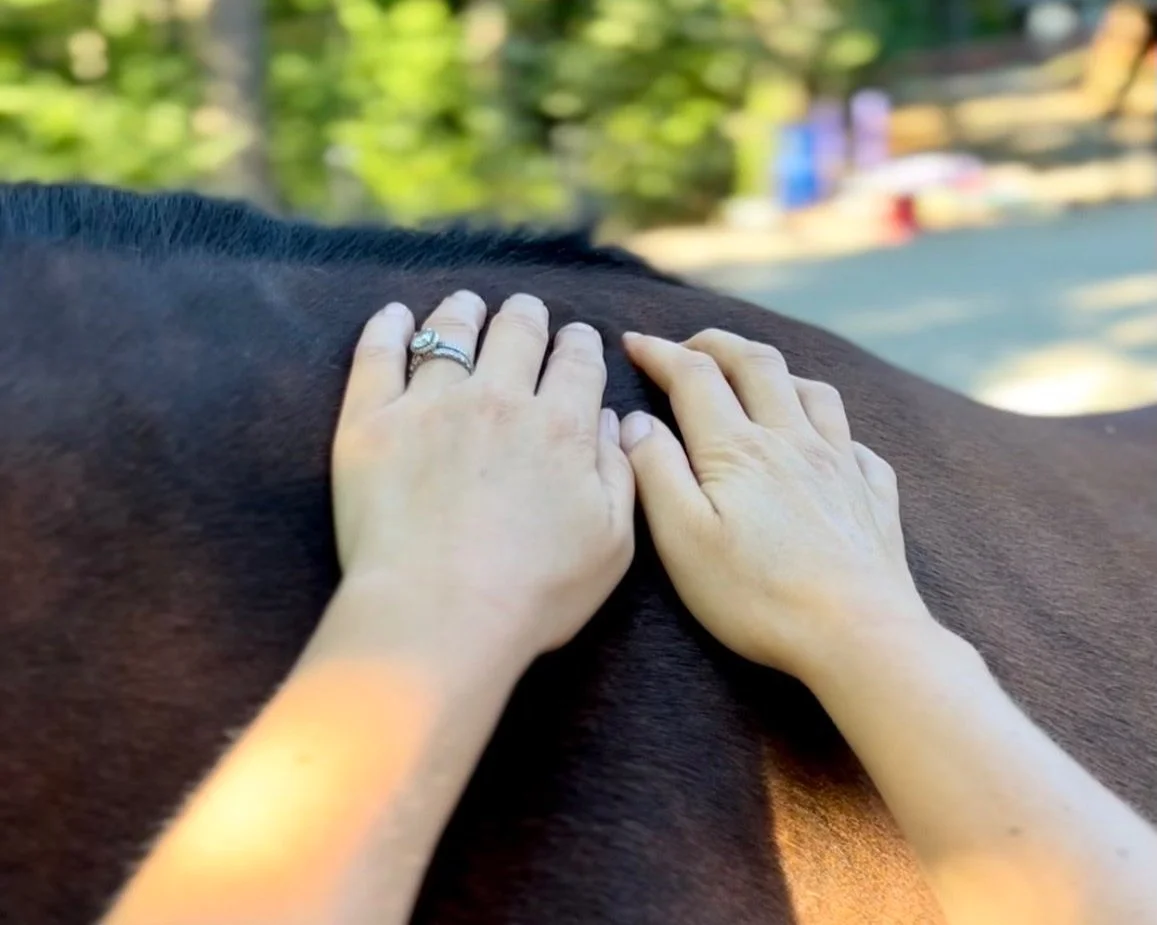Fascia in Horses Explained
How This Tissue Impacts Your Horse’s Movement and Comfort
If you’ve ever had a massage or bodywork session that left you feeling looser and lighter, like something deep inside your body finally let go, chances are, your fascia was involved.
Horses have fascia, too. And while it’s often left out of basic anatomy conversations, fascia in horses plays a major role in how they move, feel, and perform. Most owners are familiar with muscles, bones, and joints. But fascia weaves through and around all of those structures like a three-dimensional web.
It surrounds every muscle fiber, every bone, every organ. It keeps everything in place, and it helps the body communicate as a single, responsive unit.
Fascia is more than just a wrapping. It’s alive with nerve endings, fluid exchange, and sensory information.
That means it can become restricted, stuck, or overly tight just like a muscle can, and it often holds onto tension even after the initial source of stress is gone.
What Is Fascia in Horses?
Fascia in horses is a connective tissue layer made mostly of collagen. In a healthy horse, it’s flexible, elastic, and well-hydrated. It allows muscles to glide freely, joints to move smoothly, and organs to shift naturally with each stride.
But fascia can also respond to stress. Injury, repetitive movement, saddle pressure, poor hoof balance, or even emotional tension can cause it to tighten, dry out, or become sticky. When that happens, fascia loses its glide, and that directly affects how the horse moves and feels. Restricted fascia can trap tension, limit range of motion, and change posture. Over time, these restrictions may lead to compensation in other parts of the body and create new problems even after the original issue has healed.
How Fascia Affects Movement & Posture
Healthy fascia supports a balanced body. It distributes force evenly and allows the horse to move in long, fluid lines.
When fascia becomes restricted, movement becomes segmented and stiff. You might notice shortened strides, uneven bend, or difficulty lifting through the back. What’s happening beneath the surface is a breakdown in the way the fascial system supports the body.
For example, if the fascia in the hindquarters is restricted, the horse might begin to shift weight forward, causing shoulder and neck tension. Over time, the entire posture adapts to avoid the discomfort, and those patterns become ingrained.
A horse that once moved freely may begin bracing, resisting, or displaying tension that looks like a training issue, but really, it’s the body trying to protect itself.
The Role of Fascia in Pain
One of the most important things to understand about fascia in horses is that it’s packed with nerve endings. This makes it highly sensitive and a potential source of pain, even in the absence of visible injury.
When fascia tightens or sticks to underlying muscle or bone, it can tug on surrounding structures. That tension may not always show up as a limp. Instead, it might show up as irritability during grooming, reluctance to be saddled, resistance in transitions, or a general change in behavior.
Your horse isn’t being moody or stubborn. They’re trying to communicate that something deep in their body doesn’t feel right, and that something might be their fascia.
How Bodywork Supports Fascia in Horses
Equine bodywork is one of the most effective ways to restore healthy fascia. Through gentle hands-on techniques like compression, myofascial release, and range-of-motion exercises, we help rehydrate the fascia, release adhesions, and bring elasticity back to the system.
When fascial restrictions are addressed, horses often become more relaxed, balanced, and open in their movement.
You may see them yawn, lick and chew, stretch, or shift their weight more evenly. Over time, improved fascial health can lead to better performance, fewer injuries, and a more comfortable horse overall.
You Can Support Fascia from Home
You don’t need to be a professional therapist to help your horse feel better. That’s why we created Equine Bodywork Online, to give horse owners the tools to care for their horse’s fascia, posture, and overall well-being from the ground up.
Inside the program, we break down what fascia in horses is, how to spot signs of restriction, and how to use safe, effective techniques at home.
Whether your horse is in regular work, recovering from injury, or aging into retirement, supporting their fascia is one of the kindest things you can do.
The Fascia Factor
Fascia may not be visible from the outside, but it shapes everything about how your horse moves, feels, and expresses themselves.
If you’ve ever had a sense that something was “off” but couldn’t find a clear answer, don’t overlook fascia. When we begin to understand fascia in horses, we start to see patterns we didn’t notice before, and we become better partners in their care.
Are you ready to learn how to support fascia in your horse’s body?
Join us inside Equine Bodywork Online and gain lifetime access to techniques and tools that help your horse move with greater ease, comfort, and joy!

